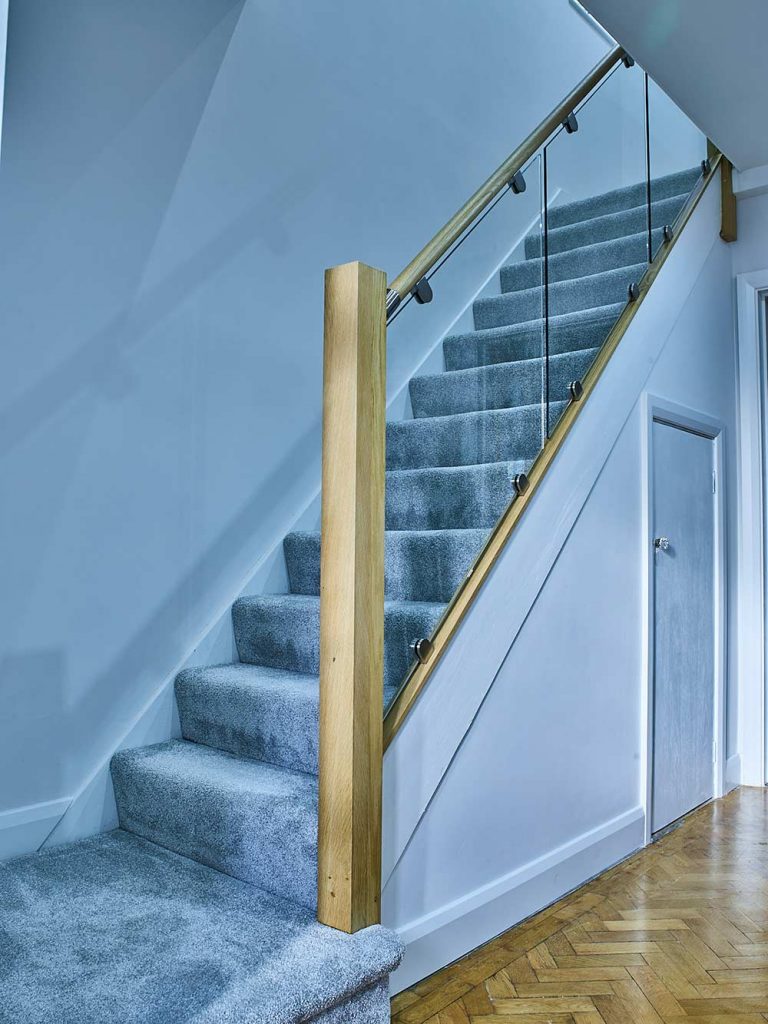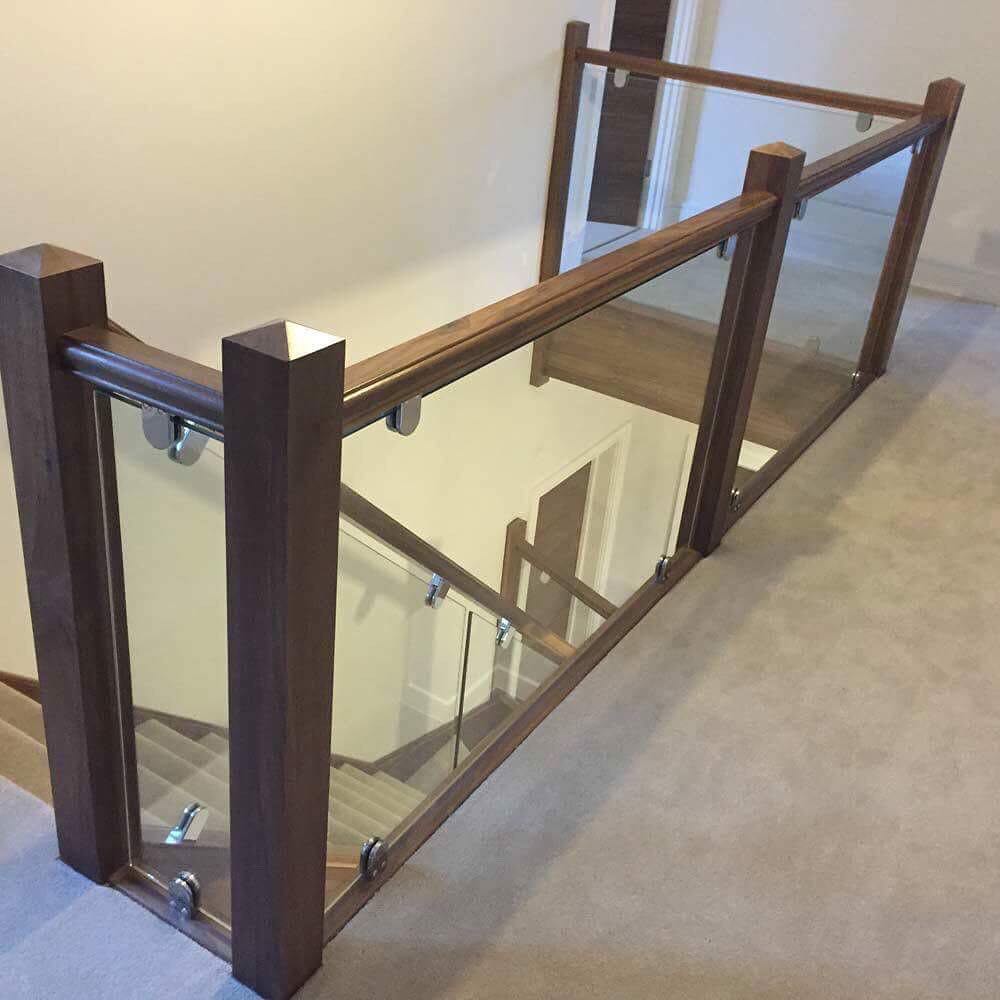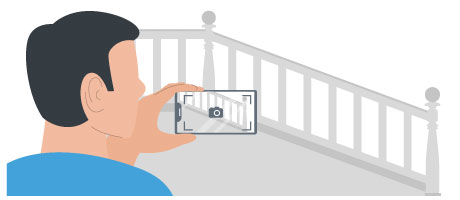REPAIRING YOUR STAIRCASE
Our glass panels are made from toughened glass, however as strong as we make our handrails and spindles, accidental damage can happen so it’s good to know how to repair them.
Our parts shop is available as well as our customer service team to help out.
Quick Links
STAIRCASE CLEANING GUIDE
Summary
In the unlikely event that there is accidental damage to your staircase, it’s good to know how to repair them.
Using our parts shop, you can patch up and replace any part if required.
STAIRCASE REPAIR GUIDE
Repairing Broken Spindles
Broken stair spindles render the staircase system unstable. For this, replacing them becomes important. While it might appear to be difficult, all you need to do is look for small wooden fillers called filets.
These filets are important in maintaining the integrity of the spindle itself. Ergo, taking care of the spindle requires careful removal of the filets first. Follow these steps to make things easier.

STEP ONE:
Insert a screw about ¾ inches into the filet. Use a screwdriver and keep your movement vertical. Drive this screw about 0.75-1 inch from the spindle itself. The idea is to drive the screw into the filet without going all the way through the filet itself.

STEP TWO:
Use an appropriate set of pliers to get a grip on the screw. Pull out the screw, and the filet follows suit. In case it is a little tight, change your direction of motion radially.

STEP THREE:
In the direction of the newly-created opening, tap the bottom end of the spindle with your palm. Now tilt its base a bit, and pop out the spindle from the opening. This will leave a gaping hole.

STEP FOUR:
Take measurements of the old spindle hereon. Make sure your new spindle is of the same size.

STEP FIVE:
Insert the new spindle into the newly-created hole. The new spindle won’t fit in like a glove, but instead would be slightly tilted. You need to tap it now. If the new spindle still does not fit, sand or chisel it out a bit more until it slips and stays perfectly fit. Be patient with this step.

STEP SIX:
Finally, place the filet back where it came from. Make sure to remove the screw, and use a hammer and nail sets to put the filter back in place.

STAIRCASE REPAIR GUIDE
Replacing Newel Posts
Newel posts maintain the entire shape of your balustrading, it is unlikely you will need to fully replace your newel post if it leans slightly it could be a sign it needs tightening.

STEP ONE:
You’ll need to remove the plug that is underneath the banister. You’ll find this next to the post itself. Drill a hole and insert a screw to make sure that the hole is big enough. Now remove the plug with appropriate pliers.

STEP TWO:
Remove the bolts, pegs, or any other additional support that keeps the post in structure. In case of a peg, be sure to check underneath the same floor. Break up any adhesive material that you see around it. While you are at it, mark the said locations because you will need them in a while.

STEP THREE:
Remove the old newel post from the banister. Clean any debris or dirt from the new space. After this, you will need a new newel post. Make sure to check for size corrections, as you will need the same fitting. Secure the post in its place, and replace every attachment that you previously removed.

STAIRCASE REPAIR GUIDE
Repairing Splintered Handrails or Bannisters
In the rare event that a handrail or bannister splinters, it’s important to know how to repair it quickly to avoid injury.

STEP ONE:
Mix epoxy and water as directed and mix them well. You should aim for a sticky consistency.

STEP TWO:
Insert a putty knife tip under the splinters and another in the epoxy. Now smear the epoxy under the splinter.

STEP THREE:
Tightly wrap the splinter with tape. Apply pressure and glue and place the tape on the splinter tightly. Glue this unit.

STEP FOUR:
Force glue deep into any cracks or crevices. The glue should thicken in 22-24 hours. Let it dry. Use the putty knife as an applier or spatula

STEP FIVE:
Scrape off any excess glue after removing the tape. Sand and smoothen out the remaining portions.

STEP SIX:
Use a cotton cloth dipped in oily stain. Wipe and shine the railing. Wait for 72 hours before using it again.

STAIRCASE REPAIR GUIDE
Fixing Squeaky Stairs
Squeaky stairs are not related to the balustrading. It’s typically a loose stringer or riser that is to blame.

STEP ONE:
The most important step in making the correct diagnosis is to walk up and down the stairs. Locate the closest possible area of squeaking. Mark these spots with tape. Now you will have a more visible target.
As a general rule of thumb, assume that if the squeaking comes while you are moving forward, the riser has some loosening. If the squeak comes from walking back or sideways, the stringer has problems.





 GET PHOTO ESTIMATE
GET PHOTO ESTIMATE
 BOOK CALL NOW
BOOK CALL NOW
 START DIY QUOTE
START DIY QUOTE
 BOOK CALL NOW
BOOK CALL NOW
 START DIY QUOTE
START DIY QUOTE